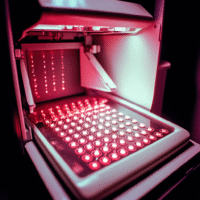Understanding the Trial Results
This study looked at how well two different doses of simethicone (a medication that helps with bowel preparation) work when combined with a liquid solution for colonoscopy. The two doses tested were 200 mg and 1200 mg, both mixed with 3 liters of polyethylene glycol electrolyte solution (PEG-ELS).
What Worked?
- Both doses of simethicone helped prepare the bowel effectively for the colonoscopy.
- There was no significant difference in bowel preparation quality between the 200 mg and 1200 mg doses.
- Patients tolerated both doses well, with few side effects reported.
What Didn’t Work?
- There was no noticeable improvement in adenoma detection rate (ADR) between the two doses.
- Both doses had similar rates of adequate bowel preparation.
How Does This Help Patients and Clinics?
Patients can benefit from knowing that a lower dose of simethicone (200 mg) is just as effective as a higher dose (1200 mg) for bowel preparation. This can make the procedure easier and potentially reduce costs for clinics.
Real-World Opportunities
- Hospitals can consider using the lower dose of simethicone for bowel preparation, which may simplify the process for patients.
- Doctors can reassure patients that both doses are effective, helping to reduce anxiety about the procedure.
Measurable Outcomes to Track
- Rate of adequate bowel preparation (how well the bowel is cleaned out).
- Adenoma detection rate (how many polyps are found during the procedure).
- Patient satisfaction and side effects reported after the procedure.
AI Tools to Consider
Clinics can explore AI solutions that help analyze patient data and improve bowel preparation protocols. These tools can assist in tracking outcomes and patient feedback effectively.
Step-by-Step Plan for Clinics
- Start by implementing the 200 mg simethicone dose for a small group of patients undergoing colonoscopy.
- Monitor the outcomes, including bowel preparation quality and patient feedback.
- Gradually increase the use of the lower dose based on positive results and patient satisfaction.
- Share findings with staff and adjust protocols as needed to improve patient care.
For more details on the research, you can read the full study here.



























